Old Family Photos Are a Great Posture Tool: Part 1: Upper Body
If you are fortunate and have photographs going back three, four, or even more generations, you likely possess a compelling tool for posture improvement. How and why exactly are these images so useful?
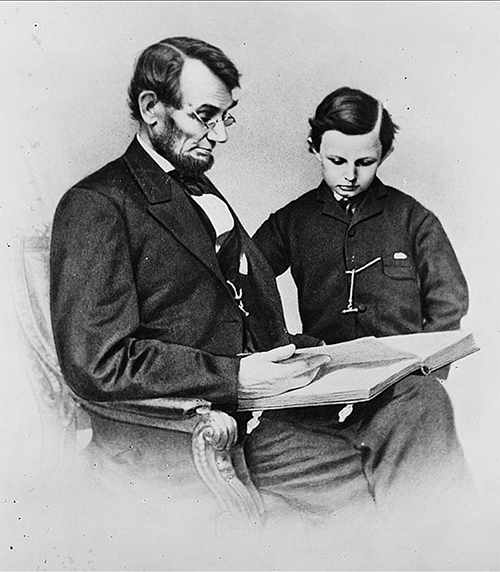
Abraham Lincoln with his youngest son, Tad, 1864. Wikipedia
The invention of photography allows us to look back in time as far as the 1840s. It is rare to possess family photographs going this far back, both because heirlooms tend to get lost over time, and because fewer photographs were taken then due to the cost of the elaborate processes in those times. But many of us have portraits of our great grandparents’ generation—whose posture is usually much healthier than what we see today.
Rediscovering ancestral posture can be fun! In our 1-2-3 Move program we regularly have a “Show and Tell” during which participants share old family photographs. The inspiration for change that these pictures bring to their owners, as well as to the online community, is powerful.
Sue Beltram shares a photograph of her parents who both show healthier posture than her own generation.
Old photographs connect you to forebears who lived their lives in a culture of healthier posture. As I explain in my book, 8 Steps to a Pain-Free Back, industrialization was the first challenge to society’s posture. Healthy kinesthetic traditions that had been passed down for centuries decayed as younger people left their families to migrate to new cities and even new continents for work. Posture went further awry in the 1920s, when a seismic shift in clothing fashions and furniture design actively encouraged a “relaxed” posture that tucked the pelvis, rounded the upper body, and sent the head forward. Slouching made its entrance!
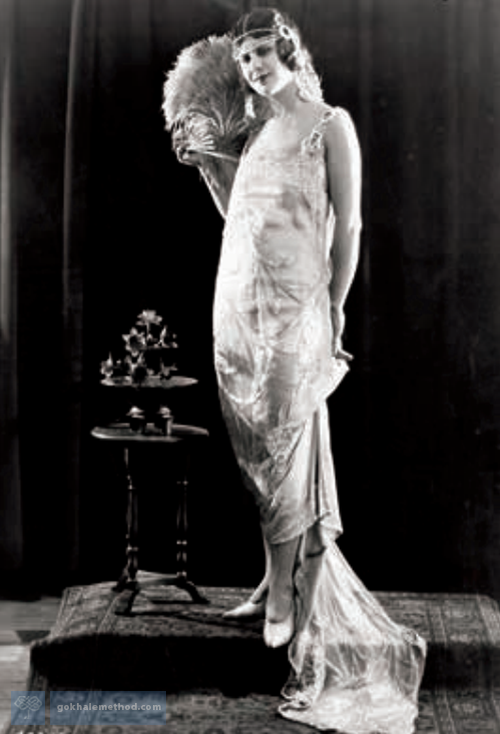
In the 1920s it became fashionable to slouch, as this photograph shows.
Viewing old family photographs, it’s details such as the shape of a mouth or the curve of a brow that give you a feeling of kinship and likeness. But photographs of your ancestors can also give you a direct strong message about the genetic basis for the healthy posture that could have been yours. You can experience that healthy posture as a characteristic of your “tribe,” rather than an attribute from some distant land. Ideally, you now have a precious resource to inspire you to reclaim your postural birthright.
Gokhale Method teacher Sheelagh Tobin shares three photos from her grandfather’s life on the daily
1-2-3 Move program.
Posture that keeps your muscles, joints, and bones healthy is part of your genetic heritage. Whatever distortions you suffer from are merely a result of cultural, familial, or individual misunderstandings, and very probably can be restored with the right knowledge, effort, and support. Guiding students through this transformative process is the purpose of all of our courses: our online Elements course, our six-lesson in-person Foundations Course and one-day in-person Pop-Up Course.
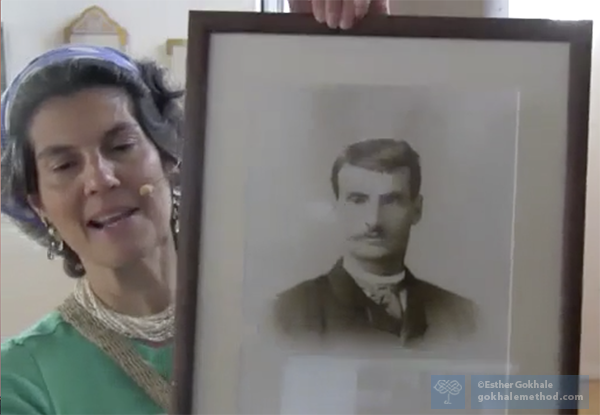
The Mendocino County Museum donated several spare antique photographic prints to the Gokhale Method Institute’s collection.
Here I use one to talk about neck posture with participants on the daily 1-2-3 Move exercise program.
Antique portraits often show a strong, well-aligned neck. The neck can easily support and balance the head when it has appropriate support from deep postural muscles such as the longus colli, which lies along both sides of the front of the cervical spine. When these muscles are weak and underused, the head and neck hang forward. This forces tissues at the back of the neck and in the upper back to carry weight they were not designed to; it also compresses the cervical vertebrae, discs, and nerves.
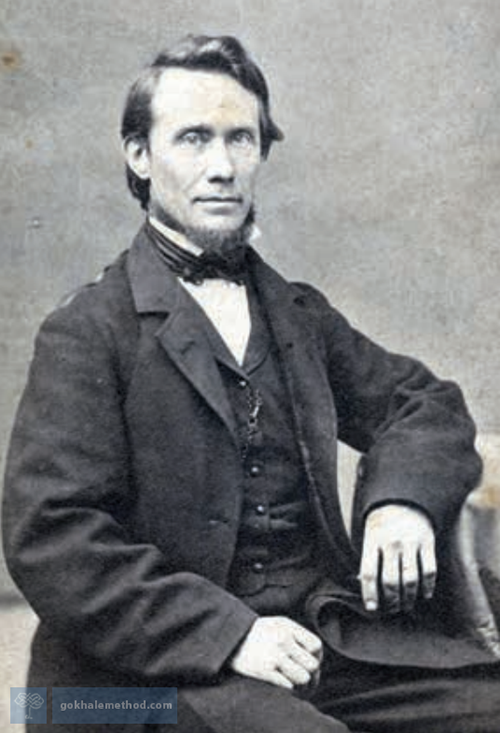
Healthy head carriage allows the head to rest on the axis of the spine while the chin rests down.
Old family photos usually also show particulars about the relaxed carriage of the head on a well-stacked spine. With the head well poised, the face angles downward and the eyes are better oriented to move as needed.
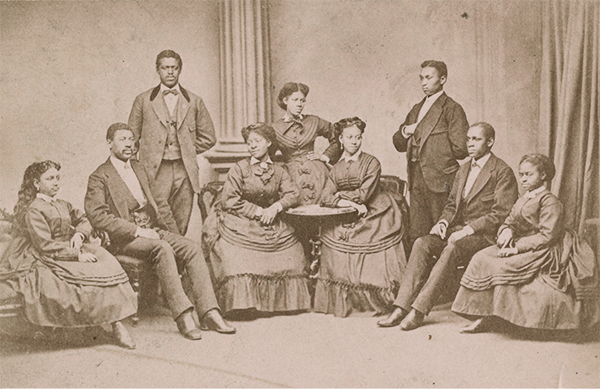
The Fisk University Jubilee Singers, c. 1870, all have their shoulders well back in a wide, relaxed position. Wikipedia
Another characteristic that is common in old photos and rare today is posterior shoulder placement and an open upper chest. In the group portrait above you can see how everyone’s shoulders are posteriorly positioned with the upper arm often remaining aligned with the back half of the torso. The very best way to start to get your shoulders into this healthy posterior alignment is to do shoulder rolls. This gentle maneuver avoids arching the back or tensing the muscles between your shoulder blades in an effort to get your shoulders back. Enjoy this video that shows you how.

Comments
Add New Comment
Login to add commment
Login